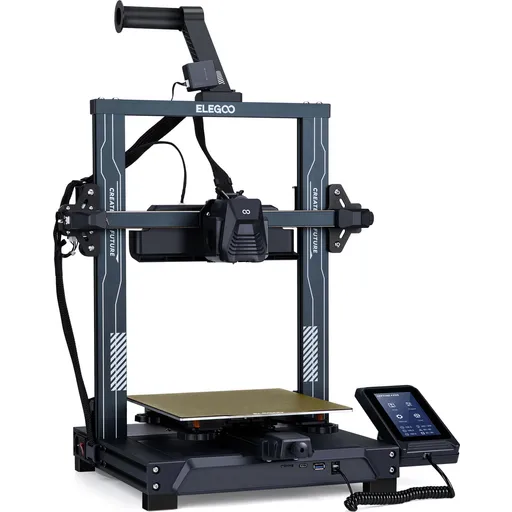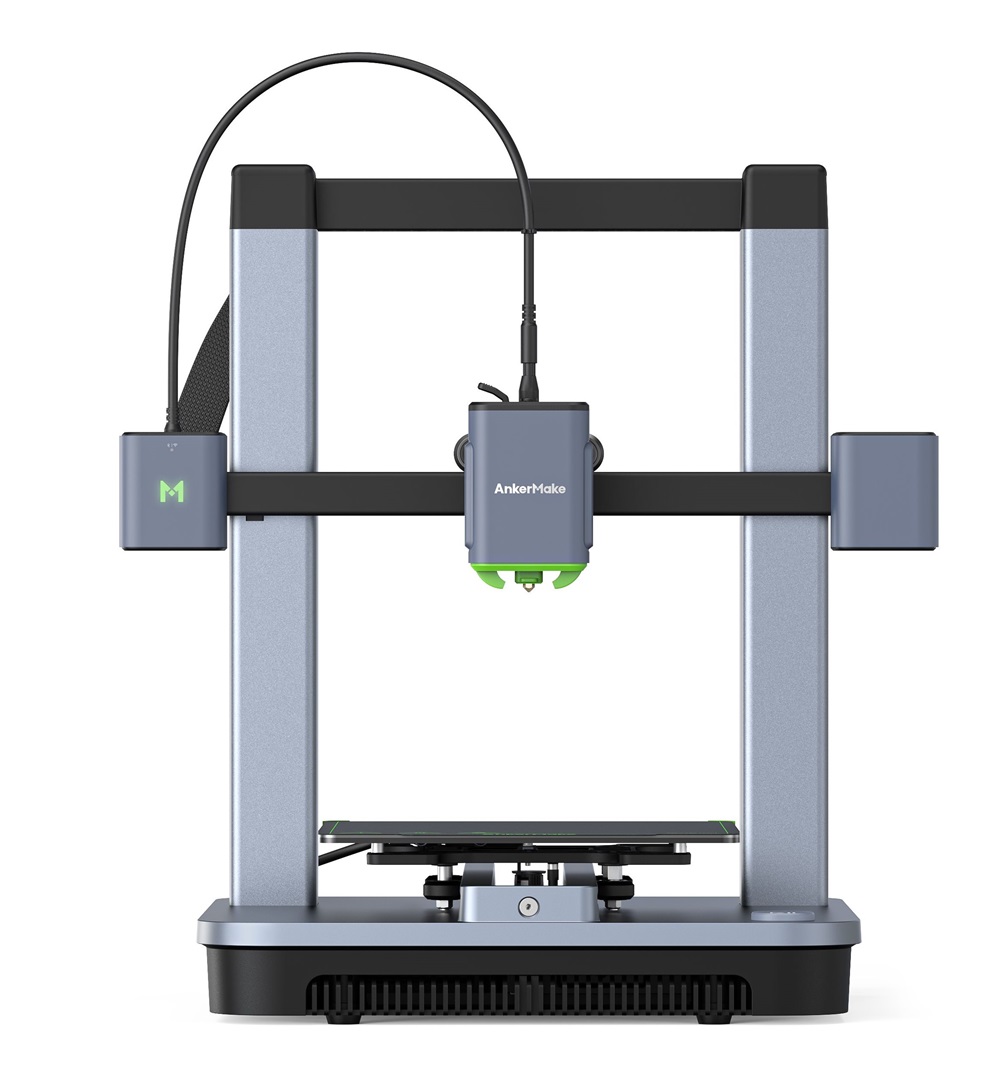Compare Neptune 4 PRO vs M5C
Comparison between the best 3D printers
Choose the best 3D printer at the best price. The cheapest 3D printers are here.
Buy a 3D printer here with 3D Fila.
 |
 |
|
| Model | Neptune 4 PRO |
M5C[BUY M5C] |
| Printing Material | Filament | Filament |
| Buy Filament for Elegoo Neptune 4 PRO | Buy Filament forAnkerMake M5C | |
| Estimated price | $359,00 | $399,00 |
| Manufacturer | Elegoo | AnkerMake |
| Release Year | 2023 | 2023 |
| Print Volume [mm] | 225x225x265 | 220x220x250 |
| Printer Size [mm] | 475x445x515 | 466x374x480 |
| Weight [kg] | 8,9 | 9,6 |
| Power Loss Recovery | YES | YES |
| Enclosed printer | NO | NO |
| Bed Leveling | Automatic | Automatic |
| Filament End Sensor | YES | YES |
| Bed type | Heated | Heated |
| Power supply system | Direct Drive | Direct Drive |
| Standard nozzle | 0,4 | 0,4 |
| Maximum Nozzle Temperature [°C] | 300 | 300 |
| Maximum Bed Temperature [°C] | 110 | 100 |
| Maximum printing speed [mm/s] | 500 | 500 |
| Filament holder | YES | YES |
| Camera for supervision | NO | NO |
| Recommended filaments | PLA, PLA+, TPU, PETG, Nylon, ABS | PLA, PETG, TPU, ABS, PA, PLA-CF, PETG-CF, PA-CF |
| Recommended slicers | Bambu Studio, Super Slicer, Cura, Prusa Slicer, Orca | AnkerMake Studio (macOS, Windows), Simplify3D, Ultimaker Cura, PrusaSlicer |
| Maximum Resolution [mm] | 0,1 | 0,1 |
| Processor | ARM 64 bit | |
| Display | Touchscreen 4,3'' | |
| Power Supply | 310 W | 350 W |
| Connectivity | USB, microSD | Wi-Fi, USB-C, Bluetooth |
| Operating systems | Windows, Linux, Macbook | Windows, Linux e Macbook |
| Date of registration in the system | 2024-07-02 | 2024-09-11 |
| Release date | 2023 | 2023 |
| Extra features | The Elegoo Neptune 4 Pro stands out for its advanced features, including pre-installed Klipper firmware, a dual-gear direct extruder with a 5.2:1 ratio, a high-temperature nozzle (up to 300°C), a flexible magnetic PEI platform, efficient cooling fans, and a 121-point auto-leveling system. The printer also features a 4.3-inch touchscreen interface, dual linear bars on the X and Y axes, and a segmented heated bed for energy savings. | The AnkerMake M5 printer stands out for its impressive print speed, reaching up to 500mm/s. It features AI print monitoring, an integrated camera for creating timelapses, auto-leveling bed with pressure sensor, direct extruder, flexible PEI-coated build plate, and Wi-Fi and USB-C connectivity. Assembly is quick and easy, and the printer is designed to deliver high print quality and ease of use. |
| Support for multiple colors and materials (AMS and CFS) | NO | NO |
Notes * |
||
| Cost-benefit | 7 / 10 | 7 / 10 |
| Hardware | 2.8 / 10 | 2.8 / 10 |
| Tela | . | . |
| Print volume | 3 / 10 | 3 / 10 |
| Performance | 4 / 10 | 4 / 10 |
| [BUY M5C] |
Conclusion |
| In comparing the Elegoo Neptune 4 PRO and the AnkerMake M5C, both printers are excellent options that cater to different user preferences and requirements. The Elegoo Neptune 4 PRO is slightly more budget-friendly and offers a robust set of features including advanced cooling, a high-temperature nozzle, and a noteworthy auto-leveling system. With a slightly larger print volume, it is well-suited for those who prioritize versatility and efficiency in their 3D printing tasks. The printer’s auto-leveling system and pre-installed Klipper firmware provide advanced printing capabilities, making it a solid choice for enthusiasts looking to dial in their print settings. On the other hand, the AnkerMake M5C slightly edges out with its quick assembly, impressive print speed, and integrated AI monitoring capabilities. Its connectivity options are more extensive with Wi-Fi and Bluetooth support, appealing to users who value smart, connected devices. However, it has a marginally smaller build volume and maximum bed temperature. Both printers receive equal credit in cost-benefit and performance, indicating that users will find quality in both options. Ultimately, the choice between the two may hinge on personal priorities: if print volume and advanced firmware features are crucial, the Elegoo Neptune 4 PRO may be the better fit; for those seeking faster prints and more connectivity options, the AnkerMake M5C would be more appealing. In conclusion, each offers unique strengths that cater to different facets of the 3D printing experience, making either a commendable investment depending on user needs. |

